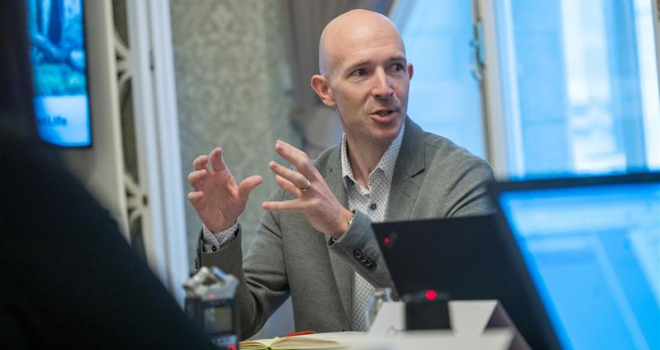
"I do believe that products which offer more than just peace of mind are part of the solution to improving customer trust and, thereby, new business."
Trust is often easier to instil in customers when your product is tangible. It’s easy to believe a good quality watch is worth the investment, ticking faithfully on your wrist day after day. We trust that our favourite fast food will be tasty and consistent, since we have enjoyed it (sometimes too regularly) over many years.
Intangible products, such as protection policies, require a greater level of faith from the customer. There is no physical evidence that the money being paid is going to deliver a good outcome. Indeed, there is only one aspect of the products we sell that customers firmly believe: it might never pay them a penny.
“Insurance is unique in that the unluckiest people benefit the most.”
Words are important when building trust, but nowhere near as vital as deeds. In the 1900s, L.L.Bean gave customers a lifetime guarantee on its goods, exemplified by the legendary story of a gentleman who returned his work boots after more than three decades of tough use since the soles had worn through. The store honoured its promise and provided a new pair.
More recently, L.L.Bean has limited its policy on returns to one year but still provides a lifetime guarantee for defects – trust, the business recognises, is core to its brand.
The protection market has worked hard on improving its reputation with customers. It used to be that insurers didn’t publish their claims payout statistics, shrouding the one piece of evidence that customer faith would be repaid in mystery and inviting suspicion.
“Into this void flowed a regular stream of case studies showing claimants who, in the darkest of times, had seen their claim rebuffed.”
The normalisation of claims statistics being published has no doubt helped build trust, but it hasn’t had a dramatic effect on new business. Indeed, the most recent figures from the Association of British Insurers (ABI) show that, on average, 98% of protection claims are paid. And yet, over the same period, sales fell compared to the prior year.
The evidence is clear: we must do more.
I doubt the chap who returned his boots after thirty years had kept his store receipt, and given the story pre-dates emails, the seller will have been unlikely to have kept in regular contact. However, the product itself served as a reminder of the brand and of their promise.
“We often expect customers to remember our brand and promise based on nothing more than a direct debit and some initial paperwork.”
When I made my own Critical Illness (CI) claim more than twenty years after taking out the policy, I was referring back to paperwork from a business which no longer existed. Neither it, nor the company which had subsequently absorbed it, had ever written to me to reaffirm its promise, refresh my memory as to the benefits of the plan or, heaven forbid, check if I was in the market for more cover - the policy pre-dated both of my, now adult, children by the way.
The buck doesn’t stop here with insurers. Most protection sales are made by intermediaries, and many have historically avoided ongoing customer communication for fear of eliciting lapses, such is the cost and effort of initial acquisition.
“Confident and collaborative communications strategies are key.”
Additionally, most insurers have begun augmenting their long-term protection products with added value services in an attempt to give that tangibility to customers.
Results have been mixed, with customer engagement rates hard to gauge and, where one can, on the low side. In my opinion, this is due to several factors: often, insurers have added too much complexity to their offering, obscuring the tangibility in a plethora of add-ons.
Intermediaries often avoid discussing added value services until after a sale has been cemented for fear of confusing the customer or distracting them from the core purpose of protection.
Furthermore, insurers have begun removing these services as well as adding them, based on cost and uptake. Neither the intermediary nor the customer knows precisely where they stand when elements of a policy are subject to change or wholesale removal.
However, I do believe that products which offer more than just peace of mind are part of the solution to improving customer trust and, thereby, new business.
